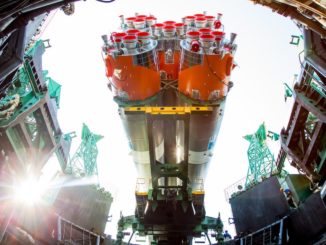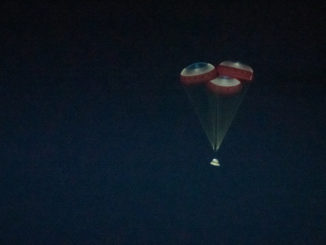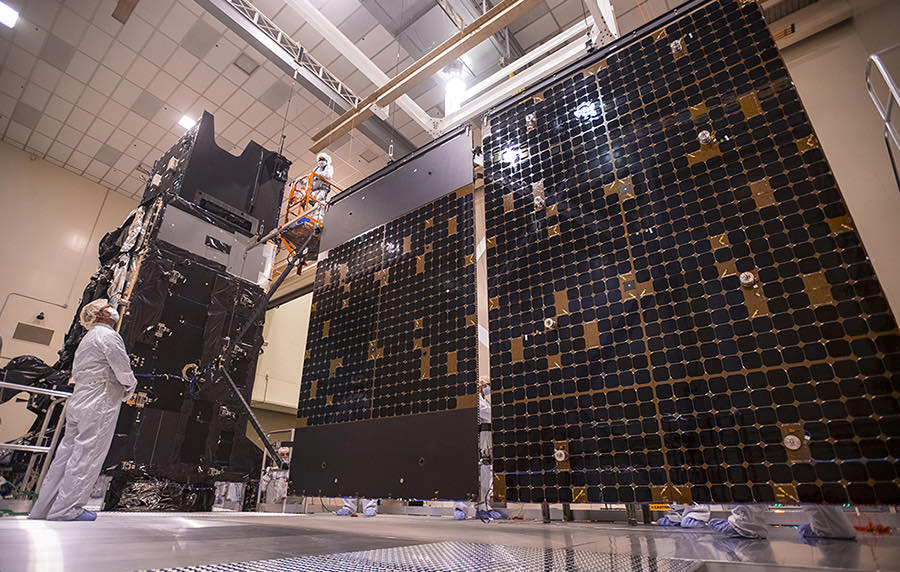
A sophisticated combat-ready U.S. military missile warning satellite moved to its launch pad at Cape Canaveral Space Force Station Saturday on top of a United Launch Alliance Atlas 5 rocket, ready for liftoff Monday afternoon.
The U.S. Space Force’s fifth Space Based Infrared System, or SBIRS, satellite was built by Lockheed Martin and cost approximately $1 billion, military officials said. The spacecraft carries infrared sensors to detect and track hot plumes from missile launches around the world, giving warning to U.S. and allied military forces of an impending attack.
The SBIRS GEO 5 satellite is heading for a perch in a circular geosynchronous orbit more than 22,000 miles (nearly 36,000 kilometers) over the equator, joining a fleet of infrared sentinels spread around the world watching for missile launches.
“SBIRS capability really remains an on-orbit guardian for us against global ballistic missile threats,” said Col. Erin Gulden, mission director for the SBIRS GEO 5 mission at the Space Force’s Space and Missile Systems Center, which manages procurement of military satellites.
The SBIRS GEO 5 satellite is closed up inside the nose cone of a ULA Atlas 5 rocket for launch from Cape Canaveral during a 40-minute window opening at 1:35 p.m. EDT (1735 GMT) Monday. Forecasters predict a 90% chance of favorable weather for launch Monday.
The 194-foot-tall (59-meter) Atlas 5 rocket emerged from ULA’s Vertical Integration Facility for the third-of-a-mile (550-meter) rollout to pad 41 at Cape Canaveral Saturday. Pushed along rail tracks, the Atlas 5 on its mobile launch table arrived at pad 41 Saturday morning to begin final countdown preparations.
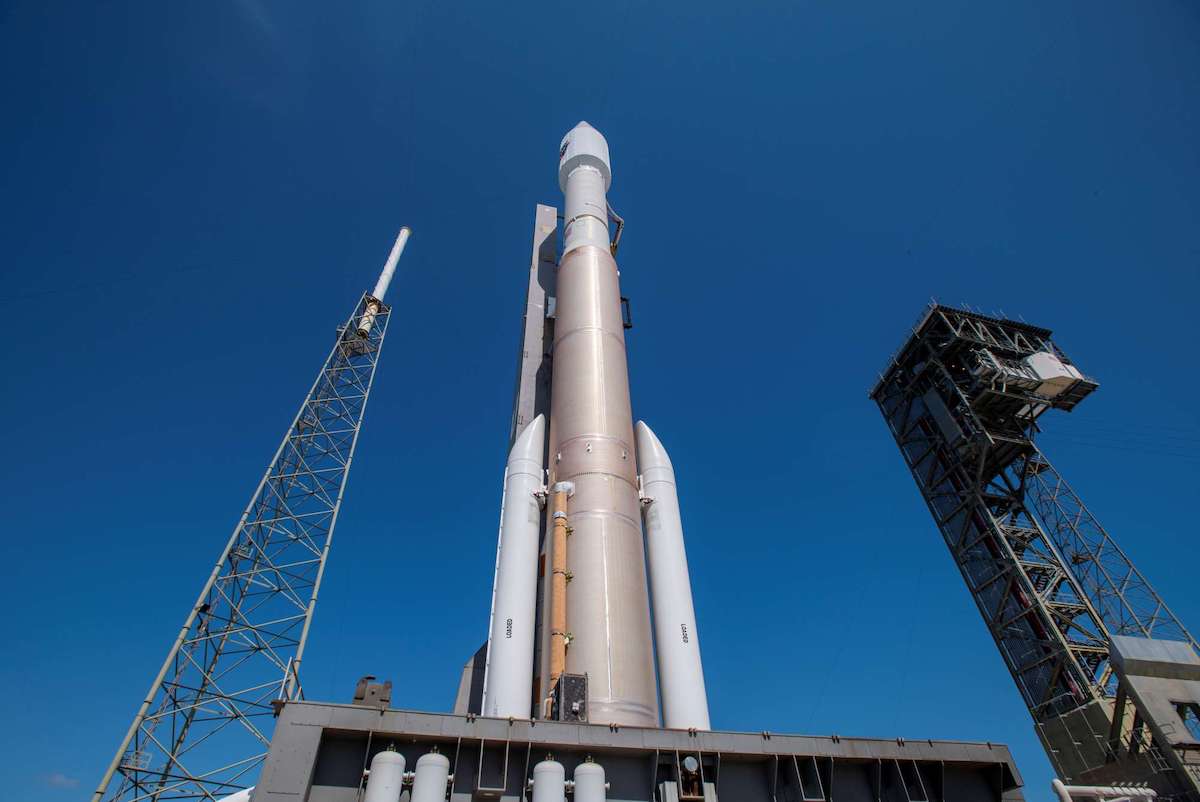
ULA ground crews connected the rocket and its mobile launch platform to ground systems at pad 41, mating electrical, data, and fluid lines to prepare for Monday’s countdown.
Teams loaded 25,000 gallons of RP-1 kerosene fuel into the Atlas 5’s first stage Saturday afternoon. The storable, room-temperature fuel will remain on the rocket until launch, when the first stage’s Russian-made RD-180 engine will consume the kerosene in combination with super-cold liquid oxygen.
The Atlas 5’s supply of cryogenic liquid oxygen and liquid hydrogen, which fuels the rocket’s Centaur upper stage, will be pumped into the rocket during the countdown Monday.
The Atlas 5 launcher that will deliver the SBIRS GEO 5 spacecraft to orbit will fly in the “421” configuration with a 4-meter and two strap-on solid rocket boosters supplied by Aerojet Rocketdyne. A single RL10 engine from Aerojet Rocketdyne will power the Atlas 5’s Centaur upper stage.
The launch will mark the eighth flight of the Atlas 5-421 variant, and the 87th launch of an Atlas 5 rocket since its debut in 2002.
The Atlas 5 rocket launching Monday will debut an upgraded Aerojet Rocketdyne RL10 engine on the Centaur upper stage. The hydrogen-fueled engine’s newest variant, called the RL10C-1-1, comes with a performance improvement and is easier to build, according to ULA.
The RL10C-1-1 engine has a larger nozzle than the engines flown on previous Atlas 5 rockets, and introduces a new 3D-printed injector, which is flying on its first operational mission, said Gary Wentz, vice president of government and commercial programs at ULA.
According to Aerojet Rocketdyne’s website, the RL10C-1-1 engine produces about 1,000 pounds of additional thrust over the RL10C-1 engine version used on previous Atlas 5 rockets.
More than 500 RL10 engines have flown on rockets since the 1960s. ULA’s Vulcan Centaur rocket will also use the RL10C-1-1 engine variant, as will all future Atlas 5s except missions with Boeing’s Starliner crew capsule, which uses a unique dual-engine Centaur upper stage.
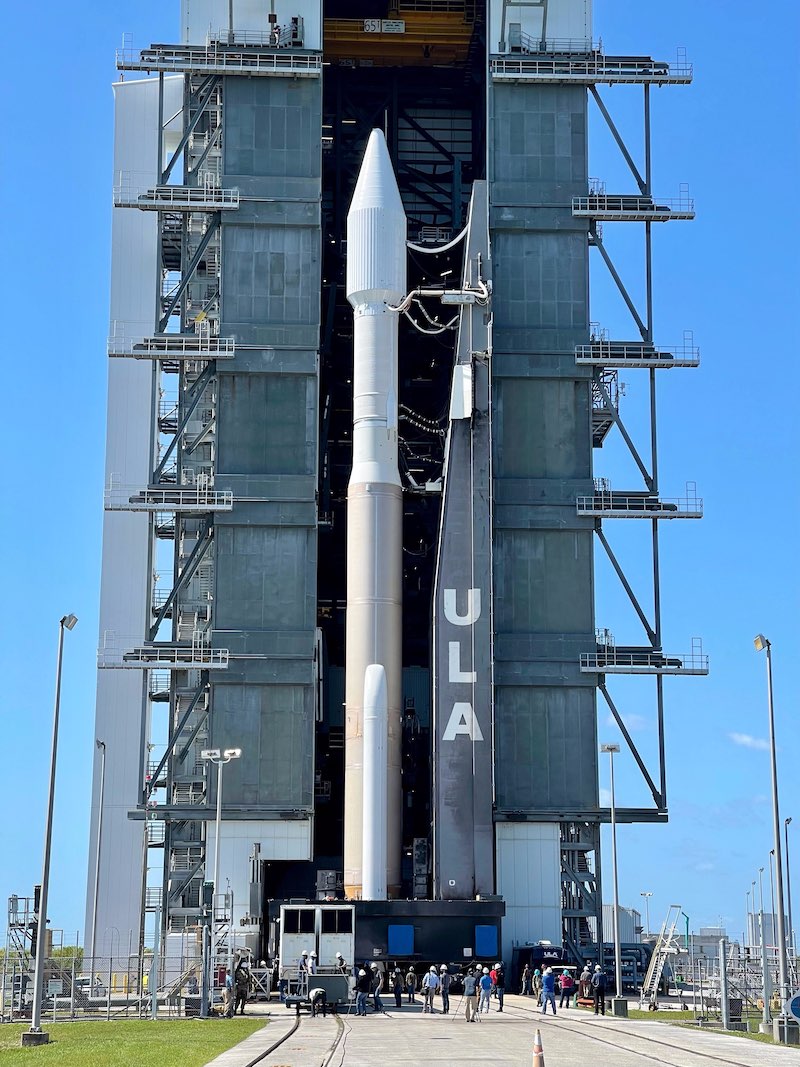
The Atlas 5 rocket launching the SBIRS GEO 5 mission will head east from Cape Canaveral after liftoff Monday. The launcher’s two solid rocket boosters, providing about half the launcher’s 1.6 million pounds of thrust at liftoff, will consume their pre-packed propellant in about a minute-and-a-half, then jettison to fall into the Atlantic Ocean at T+plus 2 minutes, 9 seconds.
The strap-on boosters were supplied by Aerojet Rocketdyne. ULA is switching to Northrop Grumman-built solid rocket boosters for most future Atlas 5 launches, plus all missions using the company’s next-generation Vulcan Centaur rocket.
Aerojet Rocketdyne’s solid-fueled motors will continue launching Atlas 5 rockets carrying crew missions into orbit, but Monday’s mission is the last military-procured Atlas 5 flight to use the old booster design. The Aerojet Rocketdyne boosters were certified for astronaut launches.
The first stage’s Russian-made RD-180 main engine will shut down at T+plus 4 minutes, 10 seconds, followed by stage separation six seconds later. The RL10 engine on the Centaur upper stage will ignite at T+plus 4 minutes, 26 seconds, for the first of two firings to place the SBIRS GEO 5 spacecraft into an elongated transfer orbit.
After cutoff of the Centaur’s first burn at T+plus 15 minutes, 6 seconds, the rocket will deploy two suitcase-size secondary payloads named TDO 3 and TDO 4 for the U.S. Air Force Academy.
A second RL10 engine burn will begin at T+plus 31 minutes, 6 seconds, to maneuver into an orbit closer to the SBIRS GEO 5 spacecraft’s final operating position.
Separation of the Space Force’s new missile warning satellite is expected at T+plus 42 minutes, 46 seconds.
The Atlas 5’s guidance computer will aim to release the spacecraft in an orbit ranging in altitude between 575 miles (925 kilometers) and 22,216 miles (35,753 kilometers), with an inclination angle of 21.14 degrees to the equator.
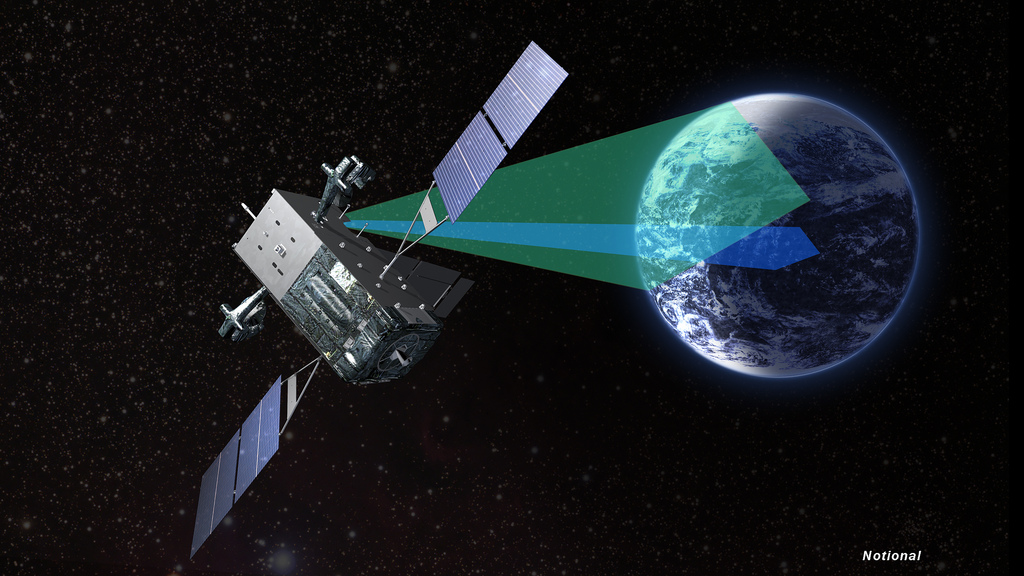
The SBIRS GEO 5 spacecraft’s on-board propulsion system will steer the satellite to a circular geosynchronous orbit that is continuously at an altitude of nearly 22,300 miles over the equator. In that orbit, the satellite’s velocity will be fixed with the rate of Earth’s rotation, giving the craft’s infrared early warning sensors a constant view of the same part of the planet.
The new satellite differs from the first four SBIRS GEO satellites, introducing an upgraded spacecraft design Lockheed Martin calls the “combat bus.” Lockheed Martin built the fifth and sixth SBIRS GEO satellites using its new LM 2100 platform, which the company says is the result of an “internally-funded, multi-year modernization initiative.”
In a pre-launch press briefing, Gulden said the “enhanced resiliency” of the SBIRS GEO 5 and GEO 6 satellites will “expand national intelligence gathering” and improve the military’s situational awareness.
“The need for SBIRS systems has never been more critical,” said Tom McCormick, SBIRS program manager at Lockheed Martin. “The threat of ballistic missile technology is spreading around the world.”
McCormick said SBIRS satellites detected and tracked more than 1,000 missile launches around the world in 2020.
“With early missile warning, SBIRS infrared detection capability serve as a tip of the spear, or bell ringer, that a launch has occurred and something is coming,” McCormick said. “SBIRS data informs many of our country’s defense systems, which together form a protective missile kill chain to defend our nation and our armed forces.”
According to Lockheed Martin, the LM 2100 combat bus is designed with hardening against cyber threats, along with additional spacecraft power, and enhanced propulsion and electronics. The modular design incorporates common components to streamline manufacturing, and can more easily accommodate new types of sensors to respond to innovation and new military requirements.
The LM 2100 combat bus will also be used by the next generation of missile warning satellites Lockheed Martin is building for the Space Force to replace the SBIRS fleet. The next generation of GPS navigation satellite, due to begin launching in 2026, will also use the combat bus platform.
The final SBIRS GEO satellite, GEO 6, is scheduled of launch on an Atlas 5 rocket in 2022. The first next-gen Overhead Persistent Infrared, or OPIR, satellite will launch in 2025 to begin replacing the SBIRS satellites.
Northrop Grumman builds the infrared sensors on the SBIRS satellites.
The SBIRS constellation includes a minimum of four SBIRS craft stationed in geosynchronous orbit and at least two infrared payloads in elliptical orbits aboard top secret National Reconnaissance Office spy satellites, providing polar coverage. The final two SBIRS satellites set for launch this year and next year will replenish the fleet.
Each infrared instrument package on the geosynchronous satellites includes staring and scanning sensors designed to provide visibility over an entire hemisphere, while allowing ground operators to focus the craft’s gaze on hotspots like North Korea
The military’s first SBIRS satellite launched into geosynchronous orbit in 2011, following a series of Defense Support Program early warning satellites that supplied missile launch data to military commanders beginning in the 1970s.
SBIRS GEO 5 weighs about 10,700 pounds (4,850 kilograms) fully fueled for launch, according to McCormick.
All four SBIRS GEO satellites have launched on Atlas 5 rockets. The rocket assigned to the SBIRS GEO 5 mission uses an extra solid rocket booster — SBIRS GEO 4 launched on an Atlas 5 with a single strap-on motor — providing additional thrust to help put the spacecraft into an orbit slightly closer to the satellite’s final operating perch in geosynchronous orbit.
“SBIRS GEO 5 is the most advanced missile warning satellite built,” McCormick said. “With the launch of every SBIRS vehicle, we’re increasing our national security posture.”
Email the author.
Follow Stephen Clark on Twitter: @StephenClark1.

